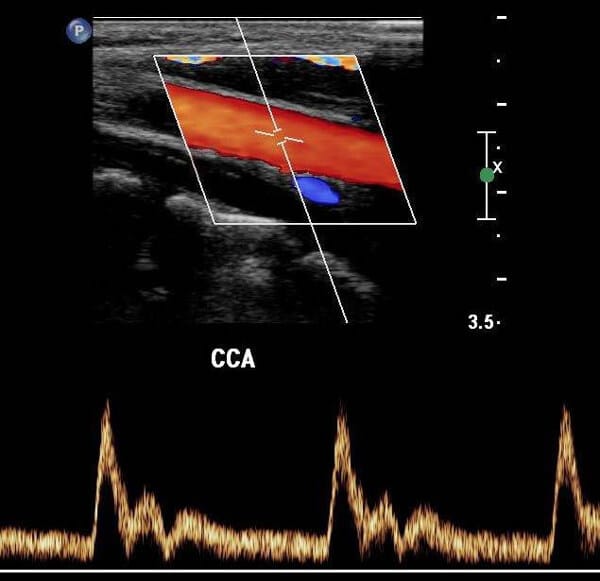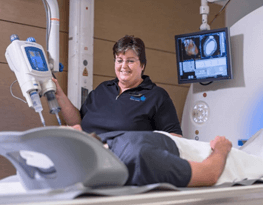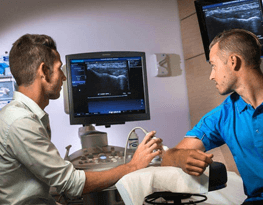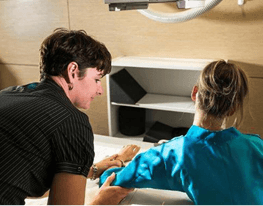What is a Carotids Doppler Ultrasound?

A Carotid Doppler Ultrasound is a special type of ultrasound which is used to measure blood flow through the carotid arteries of the neck, using high-frequency sound waves. The test is used to calculate the velocity of blood flow and to determine the degree of narrowing in the blood vessel, if any. This test is usually performed to assess the risk of stroke in a patient with episodes symptomatic of cerebro-vascular disease, such as a Transient Ischaemic Attack (TIA) (mini-stroke).
Carotids Doppler Ultrasound
What happens during a Carotids Doppler Ultrasound?
A. Before your scan
What to bring
- Your request form
- Any relevant previous imaging
- Your Medicare card and any concession cards
Preparation – the day of your procedure
There is no specific preparation and you may eat and drink as desired before and after the procedure.
You will be asked to fill out a questionnaire regarding your health status, medication, and any known allergies. You may be asked to change into an examination gown and remove jewellery for your scan.
B. During your Carotids Doppler Ultrasound
Procedure
You will be made comfortable on the examination table. Gel will be applied to the area being imaged to help create a good contact between you and the ultrasound probe. The probe will be placed directly onto the gel and your skin for the duration of the examination. For a Carotid Doppler Ultrasound, the probe is place on your neck and gently moved back and forth to image the two carotid arteries.
If you are having this examination it is common to hear strange noises as the signals coming from the flowing blood are converted into sound. Sometimes the sonographer will have to gently squeeze the calf a few times when examining the veins in the legs. This should not be painful.
Most Doppler studies will be completed within 30-60 minutes. It is not unusual for the radiologist to come in and speak with you and view the images on the screen. At the end of the procedure the gel is simply wiped from your skin so that it does not mark your clothes.
Risks and side effects
Ultrasounds are a very low risk procedure and complications are rare however you should be informed of the possible risks and side effects.
Risks associated with this procedure include:
- If scanning is performed over an area of tenderness, you may feel pressure or minor pain from the transducer.
Any medical procedure can potentially be associated with unpredictable risks.
Who will perform my Carotids Doppler Ultrasound?
Your ultrasound will be performed by a Radiologist (medical specialist) or a sonographer (a specially trained technologist).
Carotids Doppler Ultrasound
What happens after a Carotids Doppler Ultrasound?
How do I get my results?
After your appointment, the information from your scan is interpreted by Envision’s Radiologist before delivery of a report to your doctor.
Post-procedure
You should be able to go about your daily activities after your appointment.
Medical Imaging Practice Perth
Types of Imaging
At Envision, we offer the most sought-after types of imaging for diagnostics and treatments. Our Wembley headquarters is the largest single-site radiology practice in Perth







